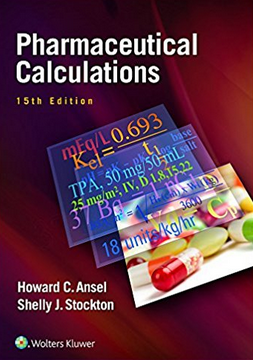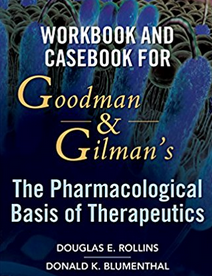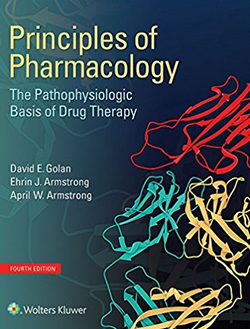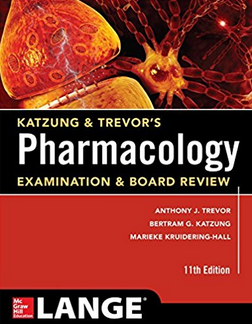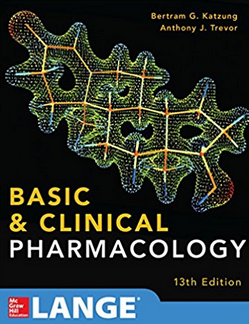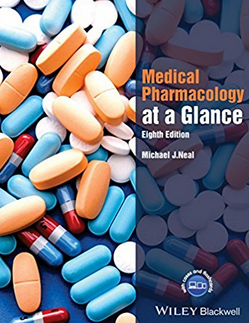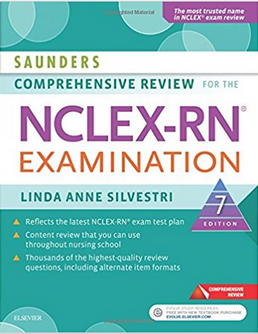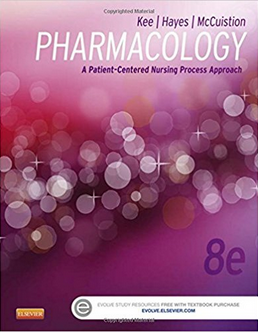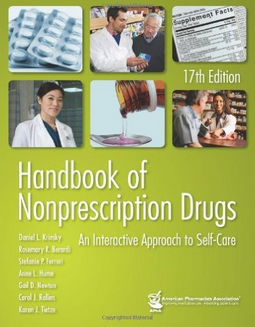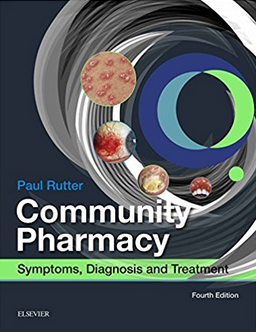Master the fundamental calculations principles and basic techniques you need to know for successful pharmacy practice! Thoroughly reviewed by practitioners, and educators, this 15th Edition maintains high standards for both academic and basic practice requirements, while offering the most comprehensive and in-depth coverage of pharmacy calculations available. A consistent, step-by-step approach makes it easy to work through the problems and gain a greater understanding of the underlying concepts.
Workbook and Casebook for Goodman and Gilman’s The Pharmacological Basis of Therapeutics (Pharmacology) 1st Edition
Goodman & Gilman’s Workbook for Pharmacologic Therapeutics delivers concise, high-yield summaries of the world-renowned coverage of the actions and uses of therapeutic agents in relation to physiology and pathophysiology found in Goodman & Gilman’s The Pharmacological Basis of Therapeutics.
In order to maximize the learning and teaching experience, this unique review is packed with pedagogical aids such as learning objectives, summaries of key points, self-assessment Q&A, case vignettes, and a complete test bank in the final chapter. Perfect as a self-study guide or as a required classroom review, Goodman & Gilman’s Workbook for Pharmacologic Therapeutics contains features and content that will appeal to both students and professors.
Principles of Pharmacology: The Pathophysiologic Basis of Drug Therapy 4th Edition
Katzung & Trevor’s Pharmacology Examination and Board Review,11th Edition
From the authors of Basic and Clinical Pharmacology, the leading pharmacology textbook, here is the newest edition of the best review book available for medical pharmacology course exams and board examinations. This skill-building guide comes with more than 1,000 questions and answers –- far more than most other pharmacology reviews –- and a chapter-based approach that facilitates use with course notes or larger texts.
Presented in full color and organized to match the syllabi of pharmacology courses, the book is highlighted by concise discussion of the major concepts the underlie basic pharmacology principles or specific drug groups, and learning aids that include numerous tables and figures, high-yield terms and definitions, summary tables, test-taking strategies, and two complete practice exams with answer explanations in the appendix.
- Delivers the most up-to-date information on all drugs, including retrovirals, immunologic agents, and chemotherapies.
- Includes two comprehensive 100-question examinations
Basic & Clinical Pharmacology, 13th Edition
Medical Pharmacology at a Glance
Medical Pharmacology at a Glance is recognised as an excellent starting point for pharmacology study. This international best-seller is the perfect companion for all medical and health students, providing an accessible, visual overview of pharmacology.
This 8th edition has been extensively updated, especially in the areas of anaesthetics, drugs used in AIDs, cardiovascular drugs, drugs used in anxiety, depression and schizophrenia, urological drugs, drug metabolism, as well as practical concerns such as drug indications and side effects.
Ideal for USMLE and pharmacology exam revision, Medical Pharmacology at a Glance features:
• The basic principles of drug action, interaction, absorption and excretion
• Chapters based on diseases or syndrome, for efficient clinical learning
• An emphasis on drug mechanisms
• References to the pathophysiology of disease, to aid understanding of drug choice and action
• Case studies with questions and full explanation of answers
• A companion website at www.ataglanceseries.com/pharmacology featuring online cases and flashcards
Saunders Comprehensive Review for the NCLEX-RN® Examination 7e
Often called the ‘the best NCLEX® exam review book ever,’ Saunders Comprehensive Review for the NCLEX-RN® Examination, 7th Edition provides everything you need to prepare for the NCLEX exam — complete content review and 5,200 NCLEX examination-style questions in the book and online. Don't make the mistake of assuming the quality of the questions is the same in all NCLEX exam review books, because only this book includes the kind of questions that consistently test the critical thinking skills necessary to pass today's NCLEX exam. Even better, all answers include detailed rationales to help you learn from your answer choices, as well as test-taking strategies with tips on how to best approach each question. Written by the most trusted name in NCLEX review, Linda Anne Silvestri, and updated to reflect the most current 2016 NCLEX test plan, Comprehensive Review for the NCLEX-RN® Examination, 7th Edition is THE book of choice for NCLEX examination review. But don’t just take our word for it — read any customer review or ask your classmates to see why there's nothing else like it!
This review is from: Saunders Comprehensive Review for the NCLEX-RN® Examination, 7e (Saunders Comprehensive Review for Nclex-Rn) (Paperback)
I used the 6th Edition and just received my RN license in the mail recently. I passed on my first attempt. My friend did not pass on her first attempt, so I recommended she try this guide. There are updates in this version. I would recommend the 7th edition because the exam has been updated since the 6th edition.I only studied for 1 month before the exam. I read at least ~75pgs a day (finished the book in ~15 days). I reread it again at a pace of ~100pgs a day (finished in ~10 days). I answered at least 75-100 questions a day on the online-exam component. I only achieved a 50-60% correct rating on the online exams. I found the 1000s of practice questions on the online component and the "pyramid points" essential to my success. The guide also came with an audio guides (in the 6th edition there was pharmacology, acid-base, electrolyte/fluids balances). Everyday, I would listen to the audio guides in the shower and while driving.
I would recommended studying longer than 1 month. I only had enough time because I was unemployed and spent hours a day studying. I felt rushed, and depressed if I didn't read/answer my daily amount of chapters or questions. I thought I was gonna fail to be honest.
Pharmacology: A Patient-Centered Nursing Process Approach 8th edition
Prepare to administer drugs safely by mastering key pharmacology concepts and drug calculation skills! Pharmacology: A Patient-Centered Nursing Process Approach, 8th Edition covers nursing pharmacology within a real-world nursing context. Using a clear, streamlined approach, this text makes it easier to understand pharmacology with a detailed unit on dosage calculations, a nursing process framework for drug therapy, and summaries of prototype drugs. Written by nursing educators Joyce Kee, Evelyn Hayes, and Linda McCuistion, this edition includes a strong QSEN focus, enhanced coverage of prioritization, and more NCLEX® Examination–style questions on the subject of pharmacology.
- NEW QSEN focus emphasizes patient-centered care, safety, quality, and collaboration and teamwork.
- NEW content covers the most commonly used drugs, including updated Prototype Drug Charts and drug tables.
- Enhanced coverage of prioritization includes nursing interventions in the Nursing Process sections listed in order of priority.
- Updated illustrations include new drug labels in the Drug Calculations chapter.
Handbook of Nonprescription Drugs: An Interactive Approach to Self-Care
Thoroughly updated and revised, the Handbook of Nonprescription Drugs: An Interactive Approach to Self-Care provides accessible information on nonprescription drug pharmacotherapy, nutritional supplements, medical foods, nondrug and preventive measures, and complementary and alternative therapies. The 17th edition helps students and practitioners develop problem-solving skills needed to assess and triage a pharmacy patient s medical complaints. It provides Food and Drug Administration (FDA) approved dosing information and evidence-based research on the efficacy and safety of over-the-counter (OTC) and herbal medications.
52 peer-reviewed chapters provide updated content on OTC medications and complementary therapies, prescription-to-OTC conversions, FDA revised or final rules, FDA safety and label warnings, therapeutic issues and controversies, treatment or prevention guidelines, OTC drug withdrawals from the market, and updated product tables and references.
Disease-oriented chapters contain new and revised case studies, treatment algorithms, comparisons of self-treatments, patient education boxes, product selection guidelines, and dosage and administration guidelines.
A new chapter, Self-Care Components of Selected Chronic Diseases covers asthma, diabetes mellitus, hypertension and heart failure, dyslipidemia, and osteopenia and osteoporosis.
Key Points section at the end of chapters highlights important concepts.
Available online through subscription to PharmacyLibrary with robust classroom resources, including monthly chapter updates, chapter presentations through template PowerPoint slides, links to credible websites, and supplemental QuEST/SCHOLAR case studies.
Community Pharmacy: Symptoms, Diagnosis and Treatment
best-selling book is fully updated to address the ever increasing demands on healthcare professionals to deliver high-quality patient care. A multitude of factors impinge on healthcare delivery today, including an ageing population, more sophisticated medicines, high patient expectation and changing health service infrastructure. Time demands on primary care doctors have caused other models of service delivery to be adopted across the world, leading to ongoing changes in the traditional boundaries of care between doctors, nurses, and pharmacists. Certain medical tasks are now being performed by nurses and pharmacists, for example prescribing. Healthcare policies to encourage patients to manage their own health have led to more medicines becoming available over the counter, allowing community pharmacists to manage and treat a wide range of conditions. Further deregulation of medicines to treat acute illness from different therapeutic areas seems likely. Government policy now encourages chronic disease management as a self-care activity, and could well be the largest area for future growth of reclassification of medicines. Pharmacists, now more than ever before, need to be able to recognise the signs and symptoms, and use an evidence-based approach to treatment.
Community Pharmacy is intended for all non-medical prescribers but especially for pharmacists, from undergraduate students to experienced practitioners.
Key features
- Guidance for arriving at a differential diagnosis
- Practical prescribing tips
- Trigger points for referral boxes
- Other hints and tips boxes
- Specific questions to ask boxes
- Case studies
- Self-assessment questions
Consistent approach gives:
- Anatomy overview
- History taking and physical examination
- Prevalence and epidemiology
- Aetiology
- Arriving at a differential diagnosis
- Clinical features
- Conditions to eliminate
Likely causes
Unlikely causes
Very unlikely causes
- Evidence base for OTC medicine
- Practical prescribing and product selection
- More on the examination of eyes, ears and mouth
- New sections on future-proofing (vaccinations etc.)
- New material covering inter-professional education for clinical skills.
- Now on StudentConsult

